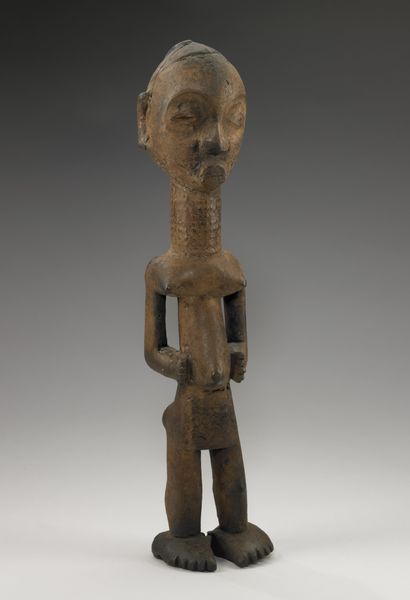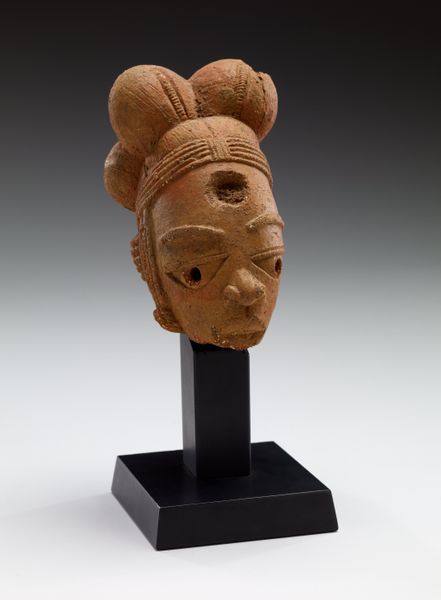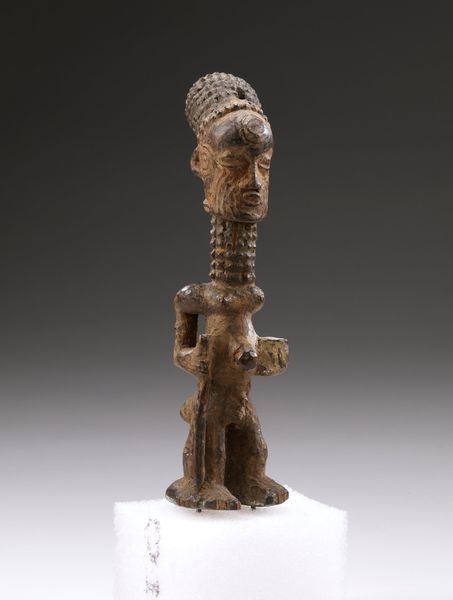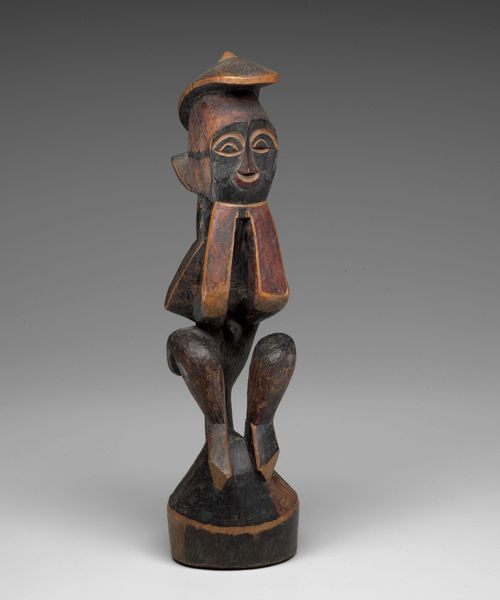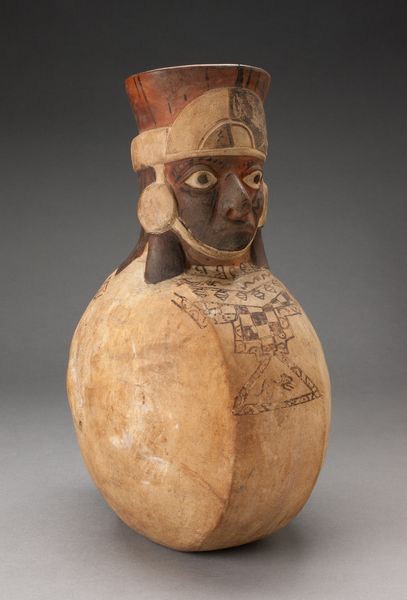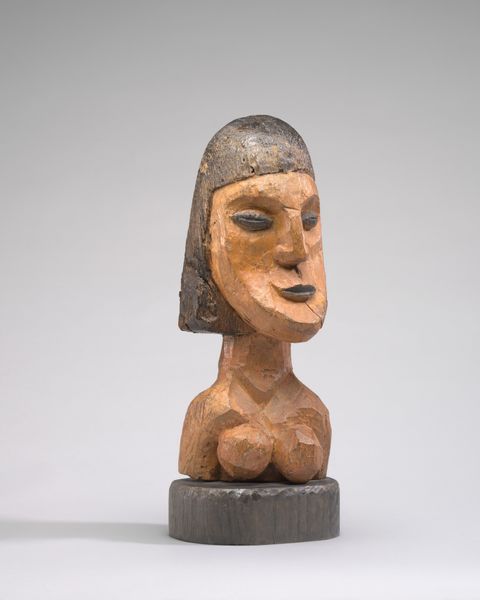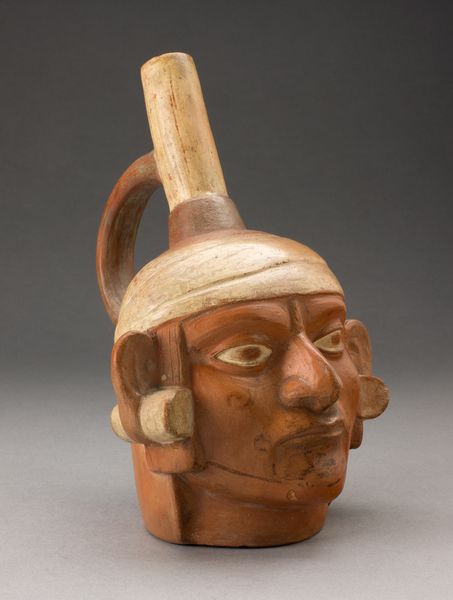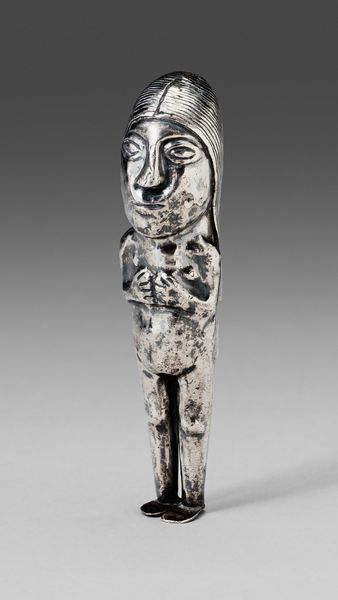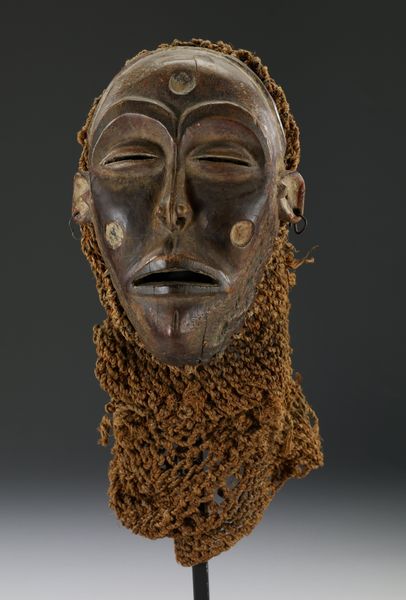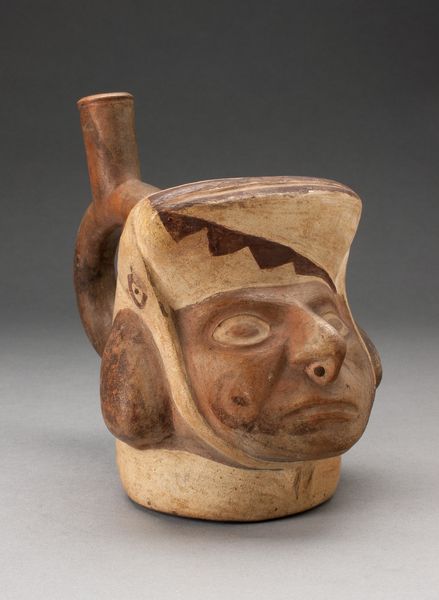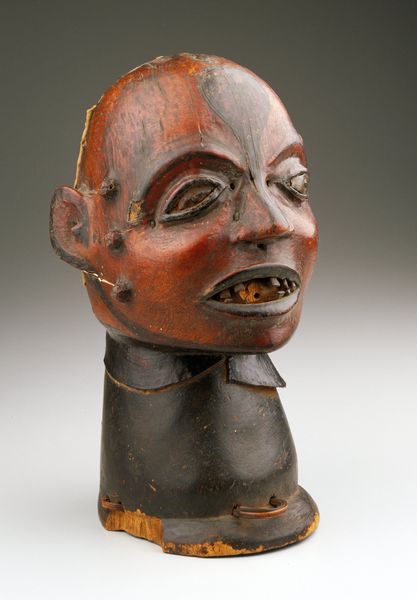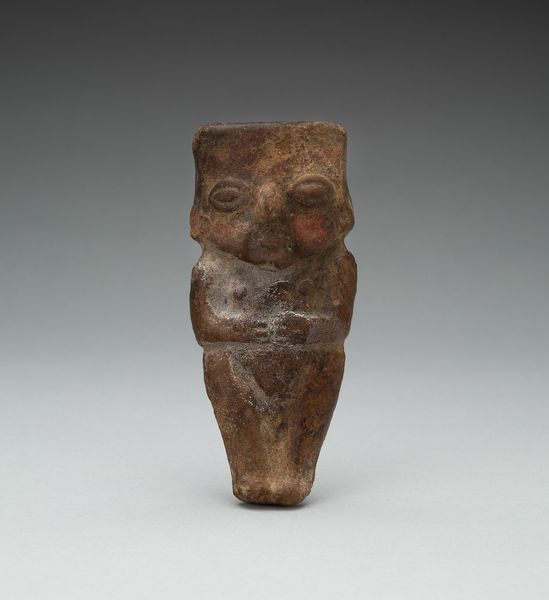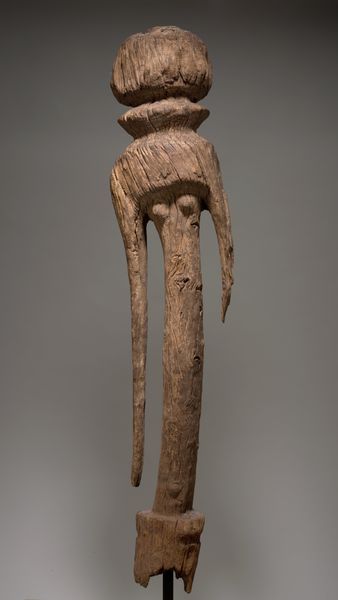
pigment, sculpture, wood
#
portrait
#
pigment
#
head
#
stone
#
sculpture
#
figuration
#
sculpting
#
sculpture
#
wood
Dimensions: 16 x 5 7/16 x 6 3/4 in. (40.64 x 13.81 x 17.15 cm) (including attached base)
Copyright: Public Domain
Curator: Looking at this Ejagham head from an unknown date here at the Minneapolis Institute of Art, what strikes you first? Editor: It has a strangely melancholic expression. Despite the patterned carvings on the sides and the almost crown-like figures on top, there’s a palpable sense of somberness, wouldn't you agree? Curator: It's interesting you pick up on that emotion. Often these sculptures, crafted from wood and pigment, served important social and ritual roles. The Ejagham people are known for the practice of creating skin-covered headdresses, but this is just a carved head with what appears to be several small heads emerging at the top of the headress. Editor: The layers of identity intrigue me. Is it an individual portrait or something more symbolic of a community or ancestral connection? How much did colonial narratives dictate the art historical lens through which we view these pieces today? Curator: Precisely, the question of individual versus collective representation is key. It's hard to ignore how the museum setting, with its history rooted in colonialism, affects our interaction. What stories are emphasized, what voices are silenced? I mean even attributing a date to it would imply it happened inside a colonial timeline. Editor: And what about the missing context? Knowing the ritual use or the specific community members it represented could dramatically shift our understanding. This work speaks to the larger problem of repatriation and decolonizing our museums. Curator: Absolutely, the history of how these artifacts ended up in Western collections is crucial. We need to encourage open dialogues about restitution. I believe these institutions can learn more if they consider that maybe they don't actually "own" art. Editor: Museums should recognize themselves as the subject. If not, the power dynamics embedded are always re-inscribed for the audience. The object will sit right where it's supposed to be: under someone's power and interpretation. Curator: Right, because after all these are social objects meant to foster connections, not trophies to validate some empire-building legacy. Editor: The somberness I sensed initially seems even deeper when framed within this context. Curator: I couldn't agree more, there's definitely an echo in this artpiece and it's up to us to use these echo chambers to facilitate more informed, balanced, and equitable histories.
Comments
No comments
Be the first to comment and join the conversation on the ultimate creative platform.
